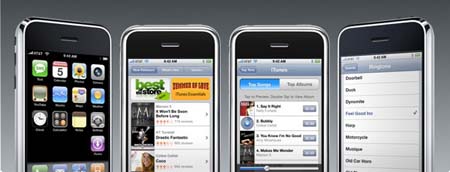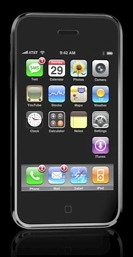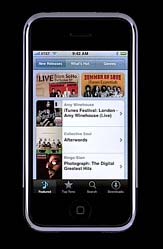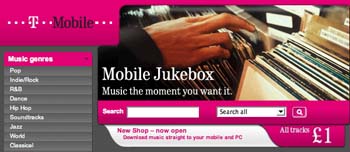 Now that the iTunes Wi-Fi Music Store is available on the iPhone, will it impact the wireless carriers who also sell music over-the-air? In the short term, probably not. In the long term, watch out.
Now that the iTunes Wi-Fi Music Store is available on the iPhone, will it impact the wireless carriers who also sell music over-the-air? In the short term, probably not. In the long term, watch out.
At the moment, Apple’s iPhone has a relatively small install base — it was released at the end of June. Apple also delivered at the start of September its new high-end iPod, the Touch, which is essentially an iPhone without the phone. Like the iPhone the Touch uses Wi-Fi and can access the iTunes Wi-Fi Music Store.
Mobile carriers, on the other hand, reach more consumers because their networks can handle many more phones from various manufacturers — Sony Ericsson, LG, Helio, Samsung, Motorola, Nokia.
But in the future, as Apple’s iPhone and iPod Touch user base grows, the carriers could be in trouble if for two reasons — the shopping and playback experiences. Using the iTunes Wi-Fi Music Store to purchase music is incredibly simple, playing it on the iPhone or iPod Touch is quite satisfying, whereas buying music from the carriers and playing it on small phones can be cumbersome and unpleasant, depending on the device.
First impressions: iTunes Wi-Fi Music Store

To reach the iTunes Wi-Fi Music Store, simply press the iTunes icon on the iPhone’s home screen. An important note: You must use a Wi-Fi connection and not AT&T’s Edge network to access the store. To be fair, the carriers have an advantage here because you can download music over their networks anytime, anywhere. However, the cellular networks are using 3G technology at best, which is slower than Wi-Fi.
The Wi-Fi Music Store is not as feature rich as iTunes — you do not have access to podcast or video downloads, free music, or lists such as iTunes Collections, iTunes Essentials, iMix, and Just for You. You also cannot click on an artist or album and receive bio information or reviews.
Even so, the Wi-Fi store is a surprisingly rich user experience. You feel like you’re in iTunes browsing, or thumbing through albums at an old record store. The interface presents album art, the artist name, and the title of the album with a substantial amount of white space around each listing. The result is that the interface does not feel cramped, which makes for pleasant shopping.
 Along the bottom of the interface, you are given icon choices for Featured, Top Tens, and Search. Featured and Top Tens are like you’re looking at iTunes’ home page. Type a few characters into Search and iTunes immediately begins returning a list of artists. Along the top of the interface are New Releases, What’s Hot, and Genres.
Along the bottom of the interface, you are given icon choices for Featured, Top Tens, and Search. Featured and Top Tens are like you’re looking at iTunes’ home page. Type a few characters into Search and iTunes immediately begins returning a list of artists. Along the top of the interface are New Releases, What’s Hot, and Genres.
If you find something you want to preview, tap the song name and the number to the left spins revealing a record-player-like icon that spins during the 30 second preview. To purchase the song, tap the price to the right, which turns into a Buy Now icon. A second tap purchases the selection. Depending on how you have your iTunes account set up, you may or may not be asked to enter a password. If you want to buy an album, tap the price next to the album art and artist/album information to begin the process.
I ordered a 19-song CD, which took about 5 minutes to download. You can monitor the download progress by tapping Downloads in the lower right corner of the interface. Once compete, the music shows up in an iPhone playlist. The next time you connect to iTunes, the music you’ve purchased automatically downloads to your desktop iTunes.
Verdict
 With the iTunes Wi-Fi Music Store, and with Nokia’s recent announcement that it will be selling music over the air, it’s apparent that manufacturers are going to make a run at the carriers and the revenues of their online music stores. In the short term, this run may not significantly impact Verizon, AT&T, Sprint, and T-Mobile in the U.S., but over time a fun, easy shopping experience and superior playback may win out.
With the iTunes Wi-Fi Music Store, and with Nokia’s recent announcement that it will be selling music over the air, it’s apparent that manufacturers are going to make a run at the carriers and the revenues of their online music stores. In the short term, this run may not significantly impact Verizon, AT&T, Sprint, and T-Mobile in the U.S., but over time a fun, easy shopping experience and superior playback may win out.
